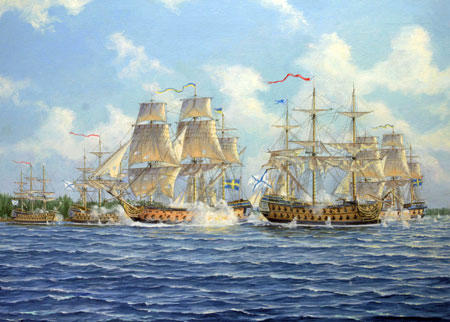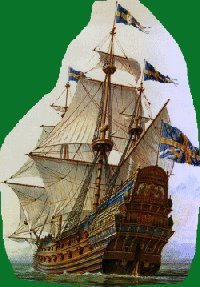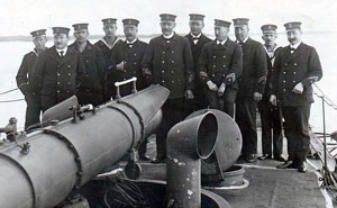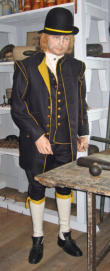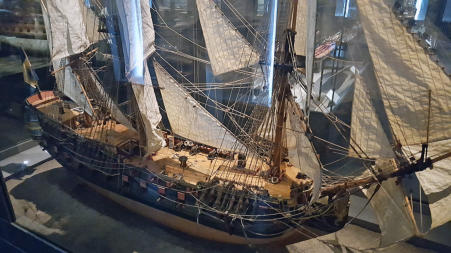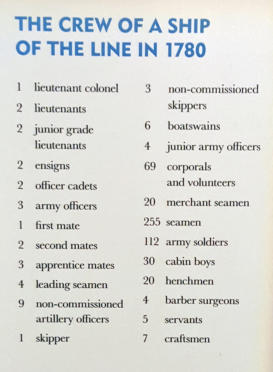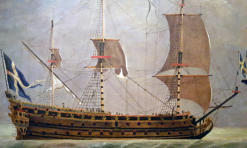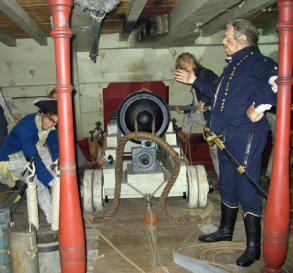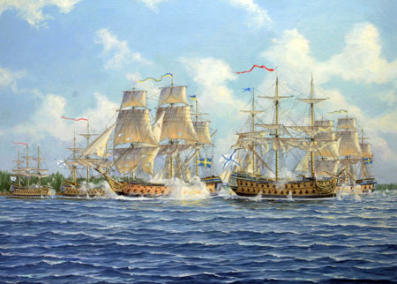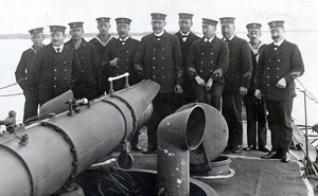

Copyright © Hans Högman 2017-06-16


The Navy of Sweden in Former
Days
The birth of the Swedish Navy is considered to be
in 1522 when King Gustav Vasa of Sweden obtained
10 warships.
The Navy Ships
The navy ships were built in the same manner from
the 16th century to the beginning of the 19th
century. However, the size of the ships did change
with an increase in size, and heavier armament. A
larger ship could carry more guns. First there were
one gun battery deck ships, then two, and the
largest battle ships even carried three gun battery
decks.
A battle ship with three battery decks could
normally carry 90 guns and the ships with two
battery decks between 50 – 80 guns.
The British HMS Victory, Admiral Nelsons flagship
in the naval Battle of Trafalgar in 1805 was built
between 1759 and 1765. She had three battery
decks with 104 guns and a displacement of 2,100
tonnes. The crew numbered 850 men. The hull was
230 feet (69 m) long and 53
feet (16 m) wide. In good
wind she could do a speed of
10 knots.
The image to the right shows
the HMS Victory. Photo Hans
Högman.
The Swedish warship The Kung Karl (The King Karl)
was launched in 1694 and was the Swedish Navy’s
largest ship at the time. She had a displacement of
2,700 tonnes. She had three battery decks with a
total of 110 guns, ten 36-pound, twenty 24-pound
and twenty-eight 18-pound guns per side. The crew
numbered 850 men.
The image to the left shows
the Kung Karl. Photo Hans
Högman 2017. Sjöhistoriska
Museet (The Maritime
Museum), Stockholm.
The large war ships, especially the ones with three
battery decks, were very difficult to steer.
The sailing qualities of the these large ships weren’t
very good either. The heavy hull and the small
shallow-draught meant they only could carry a
limited ballast. This had a negative impact on their
sailing qualities.
At the end of the 17th century a fast war ship could
do a speed of 9 – 10 knots.
These ships didn’t sail to windward very well. They
needed the wind from behind. The relatively small
shallow-draught often resulted in the ships being
effected much more by counter productive tides
and currents when trying to sail towards the wind.
Often, if the wind was unfavorable, the ships simply
had to anchor and wait for a “better” winds.
The Ship’s Armament
The guns were made of iron, muzzle-loaded and
the barrels smooth bored. The cannon balls were
made of solid iron.
The guns were measured by the size of the cannon
balls. A 24-pound gun was firing cannon balls with a
weight of 24 pounds (1 pound = 0.454 kg). The
caliber of a 24-pound gun was 5.9 inches (15 cm).
Artillery duels between enemies were normally
fought at a distance of 170 to 1700 feet (50 to 500
meters). The purpose of the
bombardments was to break
through the hull of the enemy
ship. To do that the ships
needed to use the 18 or 24-
pound guns. A large ship of
the line had a thickness of the
hull at the waterline of about
2.7 feet (80 cm), at the
gunwale only 1.5 feet (45 cm).
The image to the right show
the Swedish man-of-war Vasa
of 1628.
In favorable conditions they could open fire at
2,300 feet (700 m). But to get the guns to be
effective the ships needed to fire at a distance of
1700 feet (500 m) or less. The very best result was
achieved at a distance of less then 670 feet (200 m).
If you fired the cannon ball parallel to the water
surface you could make the cannon ball to bounce
and thereby achieve a longer shooting range.
However, the penetrating power got weaker and
weaker with every bounce. A 24-pound gun could
shoot a cannon ball about 1.25 mile (2,000 m) with
bouncing.
It was impossible to score a hit under the waterline.
The cannon ball would bounce as soon it hit the
surface. This made it more or less impossible to
sink an enemy ship. You could destroy the rigging,
the rudder and the upper decks and thereby make
the enemy ship inoperative. If you could set fire to
an enemy ship it could explode if the fire hit the
gunpowder supply.
The firepower of a war ship depended on how
many gun that could be fired at the same time at a
broadside. The larger ships of the line normally
carried between 25 and 40 guns per side. Frigates
carried about 10 to 20 guns per side.
The major naval base for the Swedish Navy was
Karlskrona in the province of Blekinge in the
southeastern part of Sweden. However there were
naval stations in both Stockholm on the east coast
and in Gothenburg on the west coast.
The Naval Battle Tactics
At the end of the 17th century a new battle tactic
was introduced in sea warfare. In battle the ships
were formed up into a single column. The reason
for this was to coordinate the fire power from
the broadsides of all the ships in the formation.
This formation is known as linear tactics. The
classification of the larger ships, ships
of the line, comes from this type of
formation in a battle. A ship of the line
was a ship powerful enough to take a
position in the line of battle.
The image shows ships in a line of
battle.
The ships of line were normally war
ships with two or three battery decks
with 24-pound guns at the lower deck
and 18-pound guns at upper battery
deck.
The enemy ships met
each other in a line,
normally sailing in
opposite direction.
See the image to the
right.
After a first round the
ships had to turn and take its position in the line and
meet each other again. To turn a ship was a very
slow procedure and to line up the ships again took
a very long time. It could take hours between each
attack. If you were close to shore or an island or if
there were shoals in the area and if the wind wasn’t
favorable it could happen that ships were lost
without even being hit by the enemy fire.
The only way you could send messages between
the captains of the ships was by sending signals by
the use of flags. This could be very difficult with all
the smoke of gunpowder surrounding the ships
during battle.
Normally, a less powerful man of war had to avoid
a battle with a more powerful one. A small fleet had
to turn away from a larger fleet. A brig had to stay
away from a frigate and a frigate from a ship of the
line. Ships of the galley fleet normally stayed away
from navy ships.
If an encounter couldn’t be avoided the less
powerful ship would often strike it's flag, that is,
surrender. A smaller ship didn’t stand a chance
against a more powerful one. An enemy ship was a
transferable resource. So instead of destroying an
enemy ship the winner would confiscate the losing
ship.
Even a more powerful force would avoid a battle if
they were in a less favorable position compared to
the enemy ships. This may be due to wind, high
seas,shoals, nearby coastline etc.
If a ship became damaged in a way that the crew
had to abandon the ship they would normally blow
up the ship to avoid it to falling into enemy hands.
Before the linear tactics the sea battles were more
of a close combat between the ships in a less
formal order. The combat often ended with a
boarding of one of the ships and hand to hand
combat.
Images - Navy
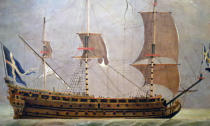
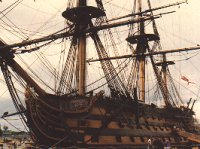
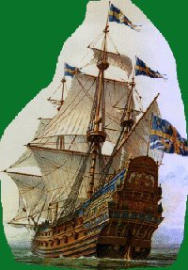
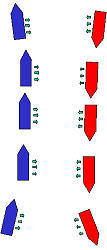

The Navy and the
Army Fleet of Sweden
in former days
The image is showing the Swedish Navy’s breakout of
Vyborg Bay through the first Russian lock on July 3,
1790. The Dristigheten is lead of the Swedish ships.
The Swedish ships are the ones with the yellow and
blue flags.
The image is a photograph of an oil painting made in
2016 by Kjell Johansson, Skåne, Sweden. The image is
shown with consent of Kjell Johansson.
Source References
•
Svenska knektar, indelta soldater, ryttare och
båtsmän i krig och fred av Lars Ericsson, 1997
•
Det gotländska båtsmanshållet 1646 - 1887, Kjell
Olson, 1993
•
Försvarets civilförvaltning 1634 - 1865, utgiven
1994 av försvarets civilförvaltning
•
Från regalskepp till sjörobot av Bengt Ohrelius,
1984.
•
Om sjökriget, från Svensksund till smygteknik av
Marco Smedberg
•
Skärgårdsflottan, redaktör Hans Norman, 2000
Navy crew on gun deck during battle, late 1700s.
Photo Hans Högman, 2007. Marinmuseum,
Karlskrona.
Navy crew on gun deck during battle, late 1700s.
Photo Hans Högman, 2007. Marinmuseum,
Karlskrona.
Navy seaman
(båtsman) wearing
uniform m/1778.
Photo Hans Högman,
2007. Marinmuseum,
Karlskrona.
Navy artillery NCO
(arklimästare -
artilleriunderofficer)
wearing uniform
m/1778.
Photo Hans Högman,
2007. Marinmuseum,
Karlskrona.
Navy officers of the Swedish Navy from the early
1900's. The image is a postcard and was posted in
1914 so the picture is taken prior to 1914.
The image is from my own collection, 2013
The image shows a model of the ship of line The
Enighteten (1732) or possibly The Göta Lejon (1746).
Photo Hans Högman, 2017. Sjöhistoriska Museet
(The Maritime Museum), Stockholm.







